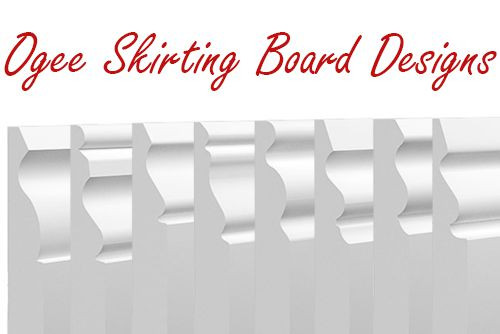
Ogee Skirting Board Styles | A Design Staple
Posted by Lee Watkinson on 21st May 2025
The flowing S-curve that brings a touch of architectural detail to rooms, old and new. Get to know the Ogee profile's story and find the right variation for your space.
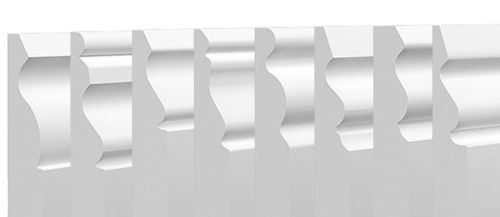
At a Glance
- That distinctive S-shaped curve creates subtle shadow lines that bring character without overwhelming a space
- Works nicely in both period restorations and contemporary new builds
- Available in several variations from minimal to more decorative, letting you match the right profile to your interior
What Is The Ogee Design?
When people talk about Ogee in home interiors, they're referring to that lovely S-shaped curve that flows from concave to convex. It's a profile you'll find not just on skirting boards, but throughout architectural history on columns, arches and decorative elements.

From left to right, these are our Ogee 1, Ogee 2, Mini Ogee 1, Oscar, Regency, Vintage 1, Vintage 2, and Profile 2. Though they each have their own character, notice how they all share that characteristic flowing curve.
That S-curve is what makes Ogee instantly recognisable. It creates a subtle shadow line that adds interest to a room without demanding too much attention. Perhaps that's why it works so well in both period properties and more contemporary spaces.
Most Ogee designs sit between 38mm and 50mm in height, with Mini Ogee 1 being the smallest at around 38mm. Even with these modest dimensions, the profile still makes its presence felt through that distinctive shape.
Ogee Through the Ages
The Ogee shape first showed up in Gothic architecture, where its double curve offered both practical strength and visual appeal. Architecture buffs might recognise it from the classic Gothic arch, where two S-curves meet at the top.
When it moved indoors to interior trim, Ogee naturally complemented other classical elements. The deeper, more pronounced versions brought a touch of elegance to otherwise plain walls. Back then, these profiles took considerable skill to hand-carve, making them something of a status symbol.
Better woodworking tools eventually made these profiles more accessible to everyday homes. Now, modern manufacturing means we can all enjoy these classic details without needing a master craftsman on hand.
Ogee becomes a common element in Georgian architecture and formal interiors
Victorian and Edwardian periods embrace elaborate Ogee variations in residential architecture
Modernism temporarily reduces Ogee's popularity in favour of simpler profiles
Renewed appreciation for heritage details brings Ogee back as a staple in both period renovations and new builds
Popular Ogee Profiles
While they all share that familiar S-curve, each Ogee profile has its own personality. Let's look at how these subtle differences might suit different spaces.
Ogee 1: The Classic
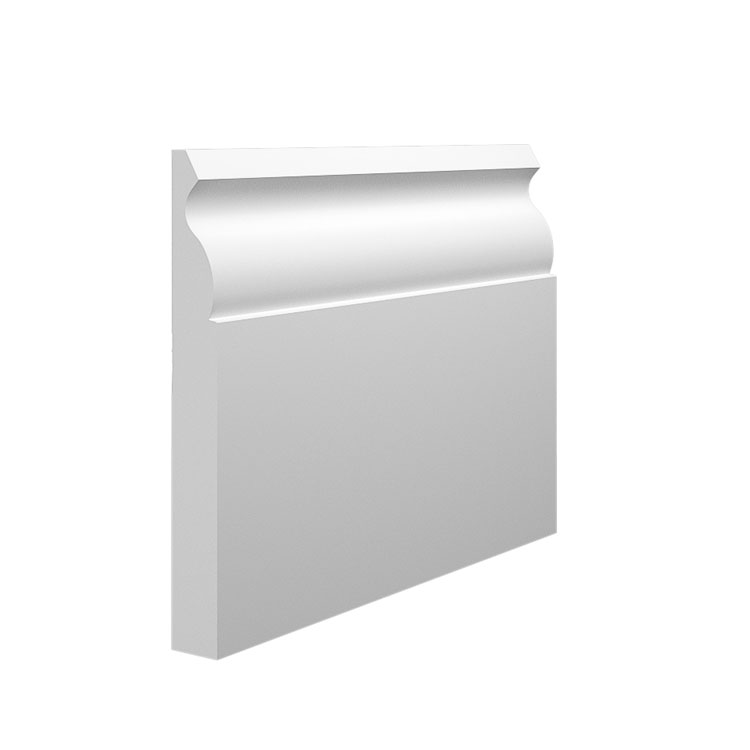
This is the quintessential Ogee with its clean, flowing S-curve. At about 50mm in height, it's what most people picture when they think of Ogee skirting. It's neither fussy nor plain, striking that balance that works in nearly any interior.
View Ogee 1 Options →Ogee 2: Added Detail
Similar to Ogee 1 but with a rounded detail at the top before flowing into the main curve. This extra touch gives it a slightly more formal feel, particularly nice in spaces where you want a bit more traditional character.
View Ogee 2 Options →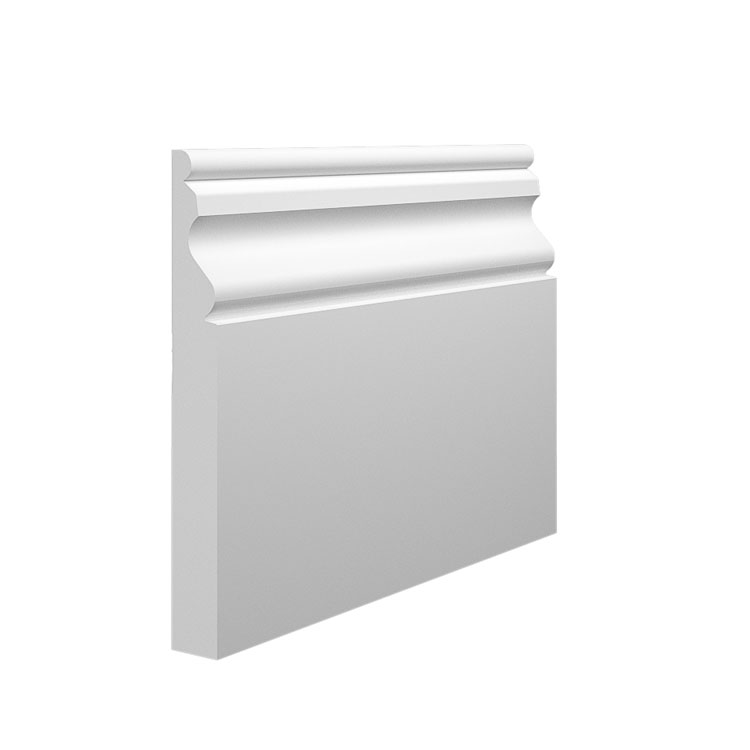
Mini Ogee 1: Compact Elegance
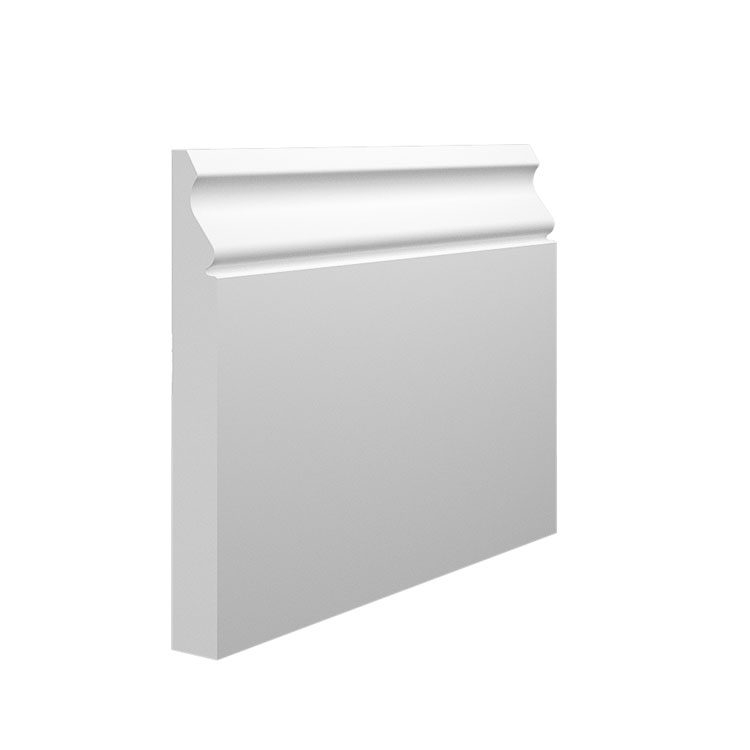
A scaled-down version of the classic at around 38mm high. It's particularly well-suited to modern interiors where you want that little nod to traditional detailing without it becoming a feature. It's often chosen for more compact spaces too.
View Mini Ogee 1 Options →Oscar: Softer Edges
Oscar follows a similar pattern to Ogee 2 but with softer, more rounded edges throughout. This subtle difference gives it a more relaxed feel that bridges the gap between traditional and contemporary styles nicely.
View Oscar Options →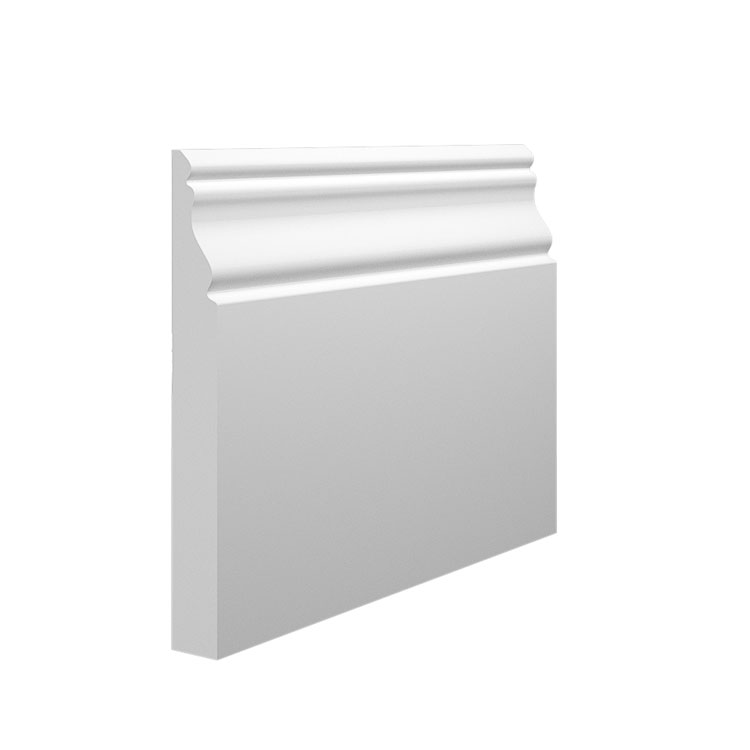
Regency: Flowing Curves
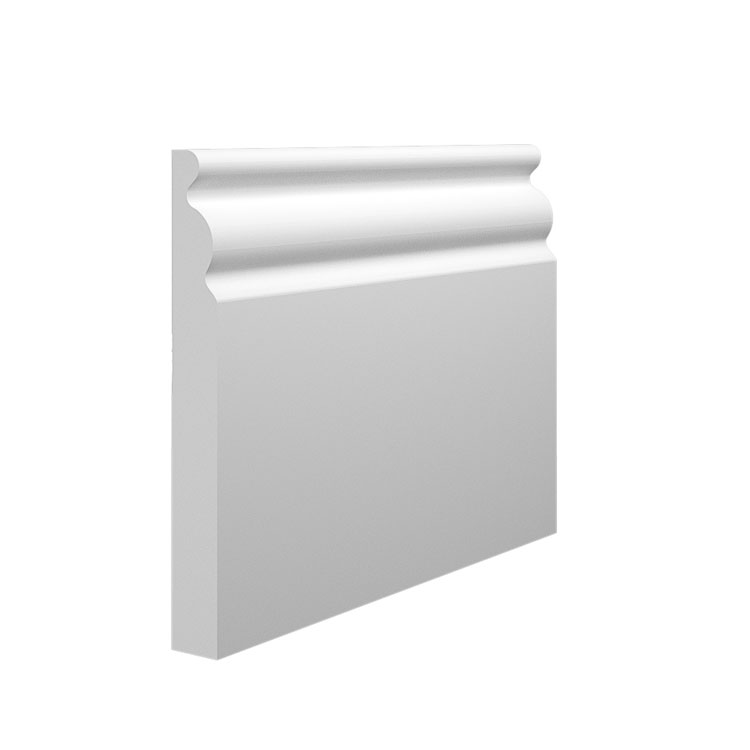
The Regency profile is a bit different from standard Ogee, with more pronounced rounded sections. This creates a smoother, more flowing appearance that works beautifully in interiors with other curved or organic elements.
View Regency Options →Vintage 1: Extra Definition
This profile takes the standard Ogee shape and adds a small rectangular groove below the main curve. It's a small detail, but it creates an additional shadow line that adds just a touch more definition to the profile.
View Vintage 1 Options →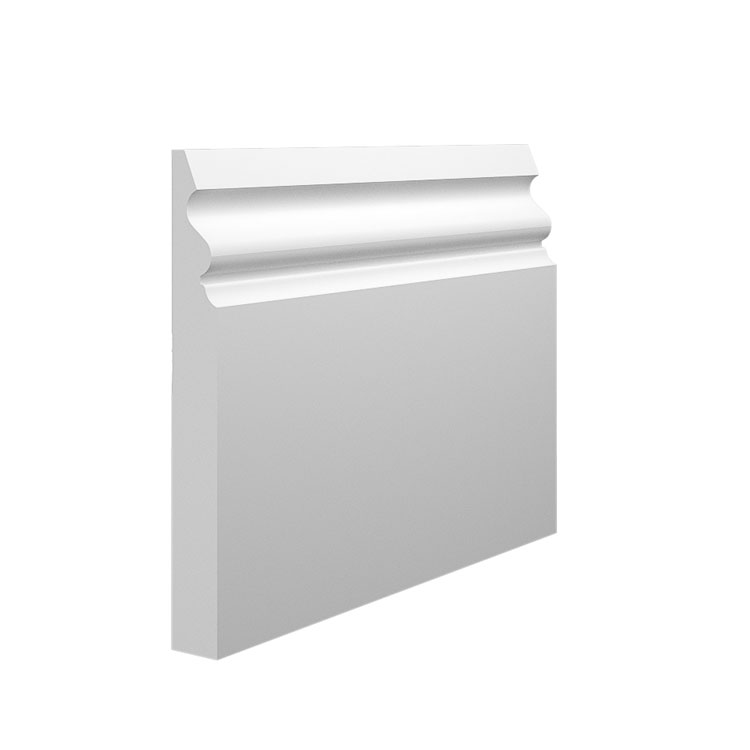
Vintage 2: Balanced Proportions
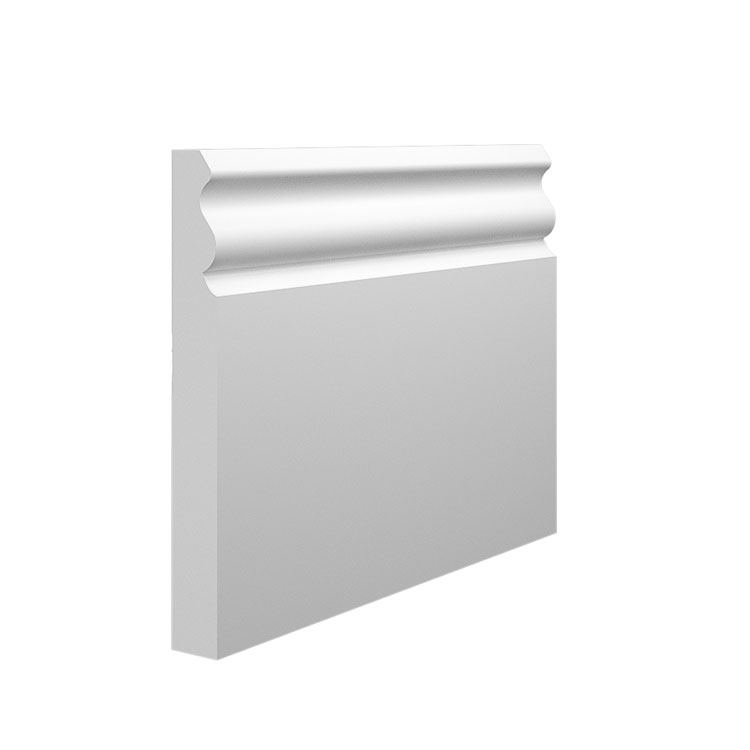
While still featuring the Ogee curve, Vintage 2 has a more uniform appearance with the angled slope sitting almost level with the outer curve. This balanced proportion gives it a slightly more substantial presence.
View Vintage 2 Options →Profile 2: Pronounced Features
Looking somewhat similar to Vintage 1 but without the rectangular groove, Profile 2 has more pronounced features. The angled top appears sharper and longer than usual, while the 'scoop' at the bottom of the design is quite distinctive.
View Profile 2 Options →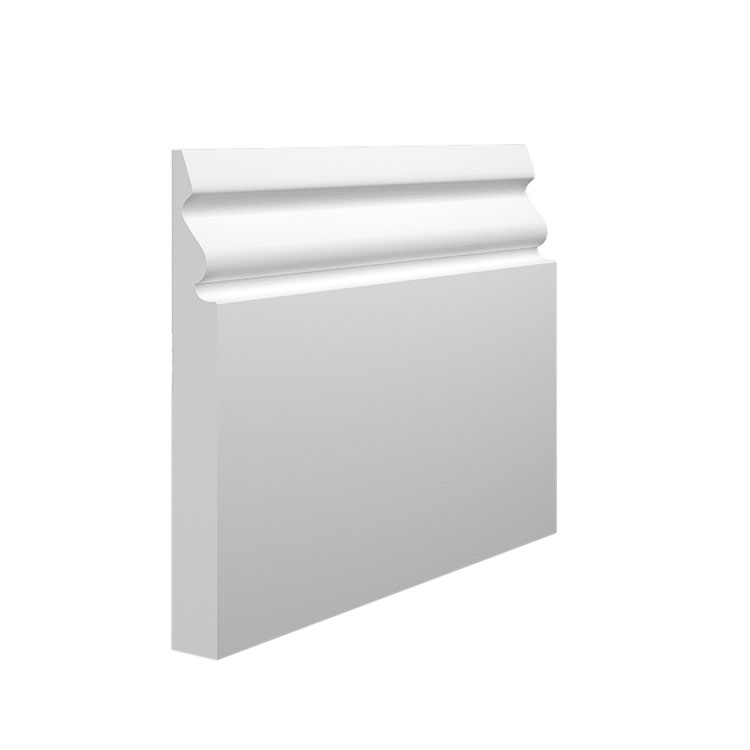
Ogee in Modern Homes
Interesting how Ogee skirting, despite its classical origins, has found a comfortable place in contemporary interiors. Wander through newly completed developments and you'll often spot Ogee details adding a touch of character to otherwise minimal spaces.
Many interior designers have found that the subtle S-curve works surprisingly well alongside clean lines and modern furniture. It's that bit of architectural detail that prevents minimalist spaces from feeling too stark or clinical.
In renovation projects, you'll often find people carefully stripping away layers of paint from original Ogee skirting boards, keen to restore and highlight these period features. That effort shows just how much these small details matter to a room's character.
Where Ogee Works Well
- Period properties where you want authentic restoration
- New builds looking for that touch of timeless character
- Contemporary interiors that need some architectural detail
- Any space where you want subtle decoration rather than plain lines
Why Do So Many Choose Ogee?
- It adds just enough detail without becoming the main feature of a room
- The shadow line it creates draws the eye along walls in an elegant way
- It sits comfortably with both traditional and modern elements
- Unlike more trend-driven profiles, it has a timeless quality
- It brings a sense of considered design to a space without trying too hard
Getting the Height and Width Right
How tall and thick should your Ogee skirting be? It depends on your room proportions and what you're trying to achieve. Here's a simple guide to help you decide:
Worth noting: When replacing existing skirting, it's best to measure both height and thickness carefully. Even small differences can be noticeable, especially where old and new sections meet at corners or doorways.
Fitting Ogee Skirting
Need more detailed guidance? Visit our blog section for step-by-step installation guides covering various room situations.
Common Questions
The Lasting Appeal of Ogee
It's no accident that Ogee profiles have remained popular through the centuries. They manage that tricky balance between decoration and restraint, adding just enough visual interest without becoming the focal point of a room.
Whether you're restoring a period property or adding subtle detail to a contemporary space, there's likely an Ogee profile that fits the bill. The range of variations available means you can find one that complements your particular interior style.
Not quite sure which profile would work best for your project? Ordering samples lets you see and compare options in your actual space, under your own lighting conditions.
Ready to choose your Ogee skirting?
Get free samples to see how different profiles look in your space.







